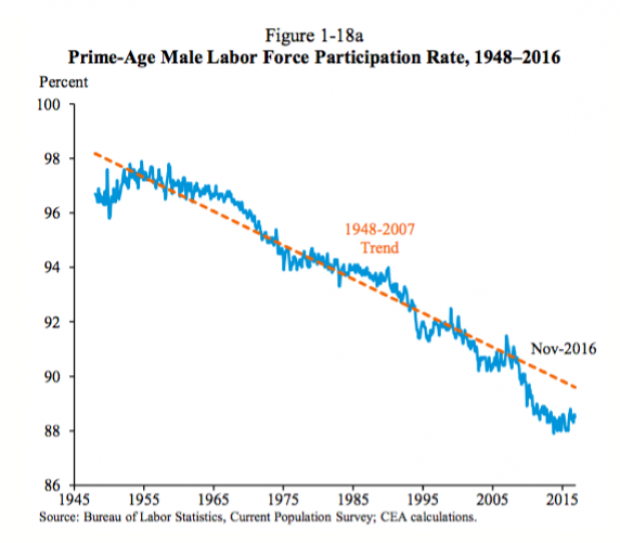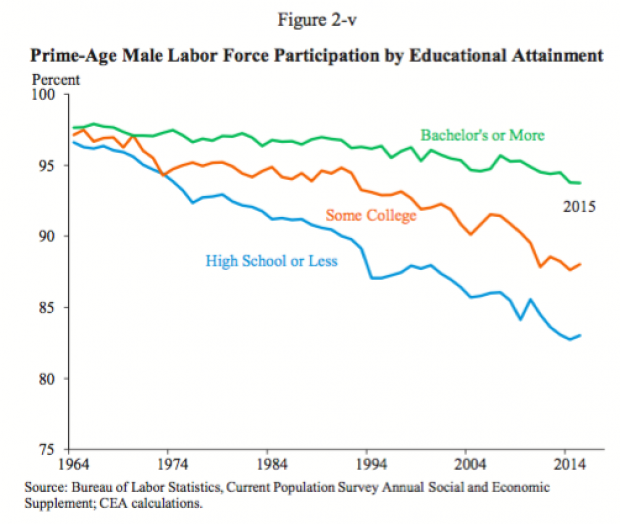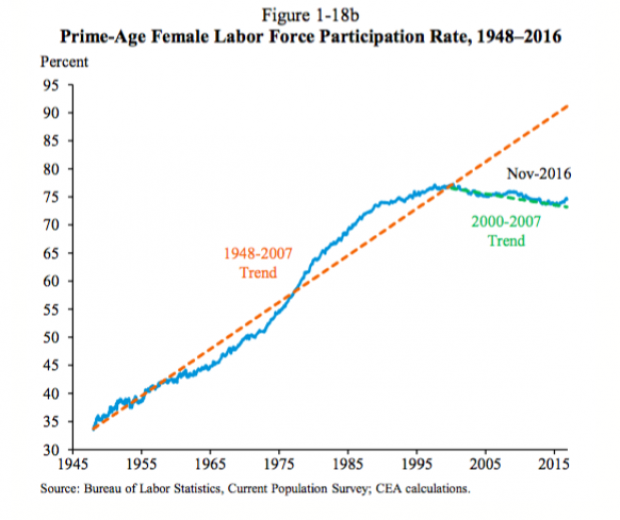Nearly one in eight men of prime working age were not in the labor force last month, continuing a long-term trend of declining workforce participation among “prime-age” males.
According to the White House’s “Economic Report of the President,” the United States is experiencing a concerning challenge of “prime-age” workers, or those ages 25-54, dropping out of the labor force.
“This troubling pattern in labor force participation goes back for more than a half-century for men and about a decade and a half for women,” the report released this month and dated January 2017 reads. “In 1953, 3 percent of prime-age men did not participate in the labor force. In November 2016, the fraction stood at 12 percent.”

The non-participation numbers are worse for men with just a high-school degree or less — 17 percent of whom did not participate in the labor force last year, according to the White House.
“[R]eductions in the demand for labor, especially for lower-skilled men, appear to be an important driver of the decline in prime-age male labor force participation,” the White House reports. “Consistent with a decline in demand for the labor of less-educated men, the drop in participation has been particularly steep for this group… and has coincided with a fall in their wages relative to more-educated men.”

The White House notes that the U.S. currently has the third lowest labor participation rate among Organisation for Economic Cooperation and Development (OECD) countries.
Working-age women have also experienced an overall decline in participation — albeit not as dramatic as men. While the workforce participation rate for women climbed for the better part of the last century, the percentage of women in the labor force has also declined. In 1999, 23 percent of prime-age women were not in the workforce, that percentage is now 25 percent.

“Over the second half of the 20th century, the decline in prime-age male labor force participation was largely obscured in aggregate data by rising female participation and favorable demographics,” the report reads. “But as the trend for prime-age women plateaued and then reversed, the impact of declining prime-age participation on the overall labor force participation rate has been far clearer in recent years.”
(H/T James Pethokoukis)


